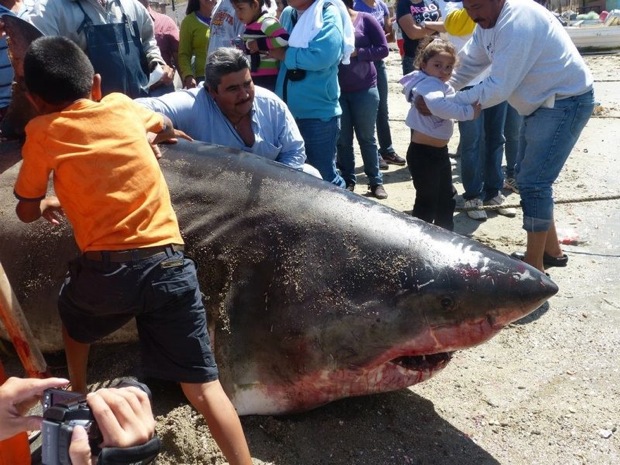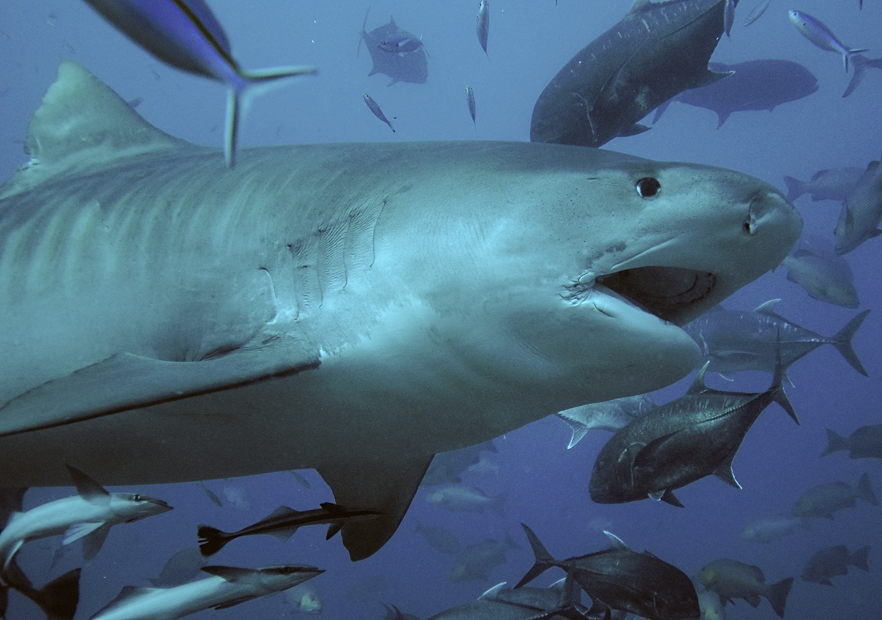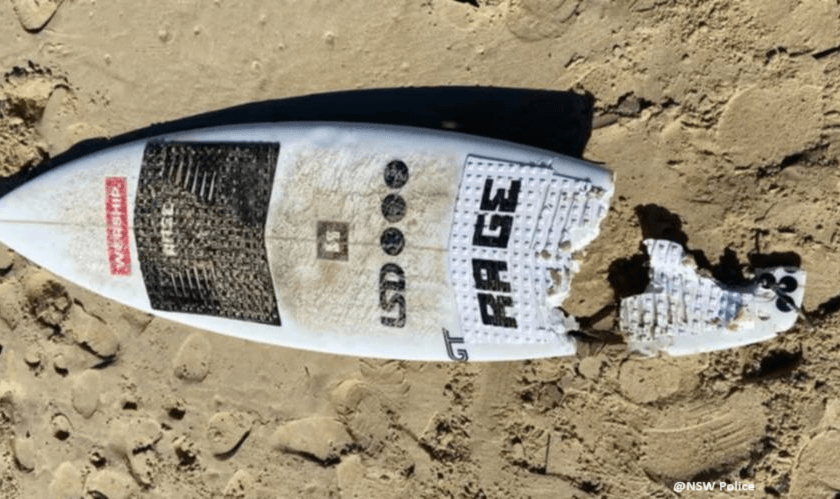An estimated 16-foot great white shark killed a diver in Mexico.
Victor Alejandro Soto Garcia, 22, was off the coast of Sonora, Mexico, on December 29, 2023, with several unlicensed friends.
The group left shore, as they do every morning around 9:30 a.m., to collect ax trip, a mollusk similar to those found off the sea floor.
Two divers used surface-supplied air to scour the sea floor for the mollusk, while tenders on the boat monitored the activity. Surface-supplied air is essentially a scuba setup but without tanks. Instead, a compressor pumps air to the diver via a collection of hoses connected to the diver, along with ropes, with the diver often pulling the boat along the surface using their tethered supply lines.
After four hours of fishing, the group loaded up, and headed toward shore.
On the way to shore, they spotted several fishing boats and decided to check out the area. Victor Alejandro and another diver descended into the water when tragedy struck. Around 1:30 p.m., the captain was reversing the panga when the air hose became taut.
Without warning, the captain looked to see what he estimated as a 16-foot great white shark severing Alejandro’s leg(s). Knowing that the diver was dead, the captain quickly began pulling a second diver from the water.
Once the second diver was safely onboard, the group recovered Alejandro’s body and carried it to a pier in Yavaros.
The captain said he has not seen a shark in over 40 years of fishing and was not given shark repellent devices from the government, as they are independent fishermen who do not participate in fishing coops.
The local mayor visited Alejandro’s family to offer financial support for burial.
The location has been marked on the 2023 Shark Attack Map
Another diver was decapitated by a white shark at the beginning of the year.
The first fatal shark attack of 2023 occurred in Tobari Bay. Manuel Lopez was also diving for mollusks using surface-supplied air when he was killed by a white shark.
He was in the open ocean around 11:30 a.m. with two tenders onboard the boat when he was attacked by an estimated 19-foot (6m) white shark.
“He was diving when the animal attacked him, impressively ripping off his head and biting both shoulders,” said Jose Bernal, speaking for the fisherman.
In response to the attack, the government began issuing shark repellent devices. Around 100 of the devices were given to fishermen to help deter negative shark interactions.
Another diver was killed by a white shark in the area in 2022.
Victor Estrella, 56, was diving for scallops on February 12 off Sonora, Mexico, when he was killed. He was using a surface-supplied air source when his diving tender saw the hoses moving erratically and began pulling his partner from the seabed. As Estrella neared the surface, the tender had to fight off a large white shark that was biting his friend.
Unfortunately, the shark fatally wounded the man. In December 2018, another diver was killed as he jumped into the water.
Nahum Aguilera was killed as soon as he entered the water. His friends saw him floating on the surface and were afraid he was having a medical emergency. When they attempted to pull him onboard, they realized a shark had severely injured his right thigh, torn open his abdomen, and severed his left leg.
In addition to the fatal injuries, photographs of his body appeared to show a dislocated shoulder and injuries on his left hand, indicating he may have tried to fight the shark.

White sharks are most prevalent in the Gulf of California during December and January when pregnant female sharks enter the area. The sharks search for fat-filled sea lions to feed upon due to their high caloric count.
Several anglers have inadvertently caught sea lions in their fishing nets. In several cases when they have a sea lion, white sharks may approach their boats as they are pulling in their nets. The sharks patrol until the sea lions are released and then feed or hunt the pinniped, leaving the nets and boat alone.


